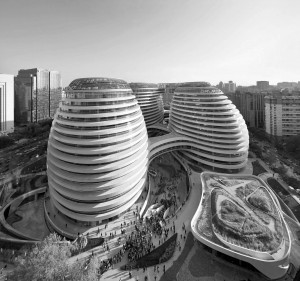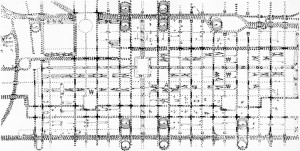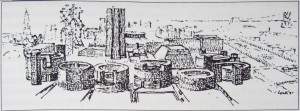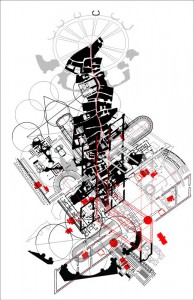ORDER OF ARCHI-COMPOSITION
|
WHAT? 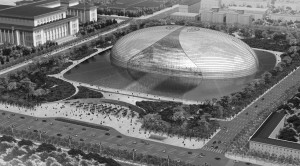 Grand Opera House, Beijing Beijing, as well as other cities of China, has become the frontier of ‘Modern’ architecture. The movement reached a peak by the construction of the new CCTV tower, the Grand Opera House and the Galaxy Soho, etc. The old city textures vanishes and is being replaced by grids which split the city into huge scale blocks. With different infills constructed, the connections between architectures decreased and the sense of enclosure of architectures disappeared. This thesis locates on the border of the ancient Forbidden City and the newly developed area, with the program of being a civic center to meet the needs of the Capitial’s growing population. Compared to other Chinese cities, Beijing is one of the most developed cities following the gigantic scale of grid and the dramatic dimension of infill architecture. Fortunately, the city still preserves some of its historical regions which contain great richness of building typologies and inner relationships. The scale of the project is strictly related to four block size, the newly inserted block could not only solve the program demand, but also big enough to deeper explore and illustrate the order of composition. The Philadelphia Civic Center is of similar scale and function compared to the thesis. WHY ? 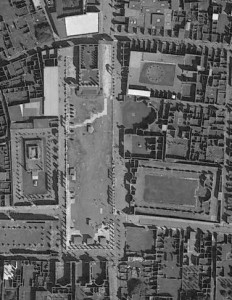 Civic Center Layout, Pompeii 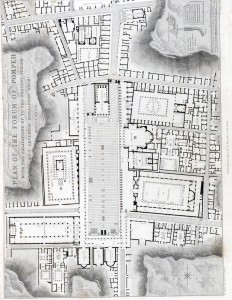 Civic Center Layout, Pompeii The thesis begins by exploring the very primitive formation of architecture composition dated from Rome Times in Italy and take Pompeii as an example. The city layout is highlighted by the intersection created by a series of public architecture (temples, Basilica, Macellum), plaza (Foro) . The buildings are identifiable to each other as well as interdependent , which not only develops an order of relationship between the peripherial building blocks, but also within themselves. The layout and order continue to develop during Renaissance, Baroque and Eclecticism period and forms the basic foundation of contemporary urban layout. The late 19th and the beginning of 20th century witnessed the Industrial Revolution. The revolution changes not only the way people produce, but also the way they live. Reinforced concrete also allows for Integration of a series of buildings into one multi-function building. However, the order behind architecture composition seems to be lost in this procedure. How? I intend to develop this thesis through a series of analytical and projective mapping experiments:
ARTIFACT The comprehensive drawing above is a combination of plan, section, plan projection and volumetric analysis drawing. Its a drawing of our 3 dimensional world and clearly illustrates the relationship between its elements. Through this method we can outline the inner composition order and use it as guidelines for the thesis. BIBLIOGRAPHY 1. Alexander Tzonis, 1986, Classical Architecture The Poetrics of Order, The MIT Press
|
